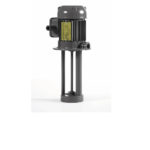Idiots guide to machine tool coolant pumps
Introduction:
In the world of machining, precision and productivity are paramount. Manufacturers and engineers constantly strive to improve the efficiency and accuracy of their operations. One critical component that plays a vital role in achieving these goals is the machine tool coolant pump. While often overlooked, these pumps are the unsung heroes of the machining process, providing the essential cooling and lubrication necessary for optimal performance. In this blog post, we will delve into the importance of machine tool coolant pumps and how they contribute to the success of modern machining.
What are Machine Tool Coolant Pumps?
Machine tool coolant pumps are specially designed devices that circulate coolant fluids within machining systems. They are responsible for delivering a continuous flow of coolant to the cutting tools and workpieces, helping to dissipate heat, remove chips, and extend tool life. These pumps are typically installed as a part of a coolant system that includes reservoirs, filters, and distribution networks.
For further details: https://www.tradepumps.com/pumps-by-type/coolant-pumps
The Importance of Cooling in Machining:
During the machining process, heat is generated due to friction between the cutting tool and the workpiece. Excessive heat can lead to tool wear, dimensional inaccuracies, and even material damage. Coolant pumps play a crucial role in cooling down the cutting zone, ensuring that the machining operation remains within optimal temperature ranges. By maintaining proper cooling, machine tool coolant pumps help prevent thermal expansion, warping, and distortion of the workpiece, resulting in improved dimensional accuracy and surface finish.
Common Coolant Pump Brands
Chip Removal and Swarf Management:
Another significant function of machine tool coolant pumps is the efficient removal of chips and swarf. As the cutting tool engages with the workpiece, chips are formed and can accumulate around the cutting area, potentially interfering with the machining process. Coolant pumps provide a continuous flow of coolant, flushing away chips and preventing them from re-entering the cutting zone. This constant chip evacuation helps maintain consistent cutting conditions, reducing the risk of tool breakage and improving machining accuracy.
Lubrication for Tool Life Extension:
Proper lubrication is crucial for extending the life of cutting tools. Coolant pumps deliver lubricants to the cutting edges, reducing friction and wear. Lubrication helps to prevent tool chipping, built-up edge formation, and adhesive wear. By extending tool life, machine tool coolant pumps contribute to cost savings by reducing tool replacement frequency and increasing productivity through longer uninterrupted machining runs.
Types of Machine Tool Coolant Pumps:
There are various types of coolant pumps available to cater to different machining requirements. Some common types include:
Immersion Pumps: This is the most common type of coolant pumps. These pumps are submersed directly into the coolant reservoir and draw the coolant for distribution.
Diaphragm Pumps: Diaphragm pumps use a flexible diaphragm that expands and contracts to draw and expel coolant.
Gear Pumps: Gear pumps use meshing gears to displace the coolant, providing a steady flow.
Choosing the Right Coolant Pump:
When selecting a machine tool coolant pump, several factors need to be considered, such as the type of machining process, coolant viscosity, flow rate requirements, and pressure specifications. It is essential to consult with coolant pump suppliers and machining experts to ensure the chosen pump meets the specific needs of the application. Please contact us today if you have a specific enquiry!
How to Replace A Coolant Pump
There are 5 simple steps you need to take when replacing an existing coolant pump. Some of these are particularly important if the pump nameplate doesn’t have this info:
- Measure the stem length. This measurement is taken from the bottom of the stem (part of the pump that is immersed) to the underside of the mounting flange.
- Check what power supply the pump requires and the motor size (kW).
- Check the pump discharge size and type.
- Are there any duty details (flow rate and pressure points) stamped on the existing pump nameplate.
- Pump materials. Please check what materials are being used for volute, casing & all wetted parts.
Maintenance and Optimisation:
To maximize the efficiency and lifespan of machine tool coolant pumps, proper maintenance is crucial. Regular checks for leaks, cleaning of filters, and ensuring adequate coolant levels are essential. Additionally, optimizing coolant parameters, such as concentration and temperature, can further enhance performance. Monitoring coolant condition through regular analysis and replenishing or refreshing it as needed helps maintain optimal cooling and lubrication.
Conclusion:
Machine tool coolant pumps are indispensable for achieving precision and productivity in modern machining processes. From cooling and lubrication to chip removal, these pumps play a vital role in ensuring optimal cutting conditions. By investing in high-quality coolant pumps and implementing effective maintenance practices, manufacturers and engineers can significantly improve machining outcomes, reduce tool wear, and enhance overall productivity. So, let us not overlook the power of these unsung heroes and appreciate the vital role they play in the world of machining.
Please get in touch with Tradepumps today – we’re good at this!
FREEPHONE 0808 250 0669









